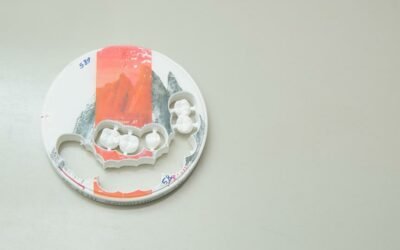Do you ever wonder if your dishwasher can effectively kill mold on your dishes?
In this article, we will explore the cleaning process of dishwashers and the factors that influence their ability to eliminate mold.
You will also learn the best practices for loading and preparing dishes, as well as choosing the right detergent to combat mold.
By following the recommendations and additional steps provided, you can ensure mold-free dishes every time.
Key Takeaways
- Dishwashers utilize high temperature and powerful water jets to clean dishes.
- Water temperature should be 140°F (60°C) or higher for effective mold killing.
- Dishwashers with heating elements or sanitize cycles are more effective in killing mold.
- Choosing a detergent specifically targeting mold and mildew, with active ingredients like chlorine bleach or hydrogen peroxide, is important for combating mold on dishes.
Understanding the Dishwasher's Cleaning Process
You can better understand the dishwasher's cleaning process by knowing how it utilizes a high temperature and powerful water jets to remove dirt and grime from your dishes. When you load your dirty dishes into the dishwasher, the first step is to add detergent to the dispenser. Once you close the dishwasher door and select the appropriate cycle, the machine springs into action.
First, the dishwasher fills with hot water, typically around 120 to 140 degrees Fahrenheit. This high temperature helps to dissolve and remove food particles and stains from your dishes. The detergent mixes with the water, creating a soapy solution that aids in the cleaning process. Once the water reaches the desired temperature, the dishwasher's internal pump starts to circulate the water, spraying it onto the dishes with powerful jets.
The water jets are strategically placed to ensure that every dish, glass, and utensil receives a thorough cleaning. The force of the water helps to dislodge any remaining food particles, while the heat aids in sanitizing and killing bacteria. The water is continuously sprayed onto the dishes, ensuring that they're thoroughly cleaned from all angles.
After the cleaning cycle is complete, the dishwasher drains the dirty water and rinses the dishes with clean water. Some dishwasher models even have a final rinse with hot water to ensure that all detergent residue is removed. Once the rinsing process is complete, the dishes are left to air dry or can be dried manually.
Understanding the dishwasher's cleaning process allows you to appreciate the technology and efficiency behind this essential kitchen appliance. It ensures that your dishes come out clean, sanitized, and ready to use again.
Factors That Affect the Dishwasher's Ability to Kill Mold
Dishwasher effectiveness in killing mold on dishes can vary depending on several factors. Understanding these factors is crucial to ensuring the dishwasher's ability to eliminate mold effectively.
One key factor is water temperature. Mold is more likely to be killed at higher temperatures, so using hot water in the dishwasher is essential. The recommended temperature for optimal mold eradication is 140°F (60°C) or higher.
Additionally, the length of the dishwasher cycle plays a significant role. Longer cycles provide more time for heat and detergent to act on the dishes, increasing the likelihood of mold elimination.
It's also important to consider the dishwasher's design and features. Dishwashers with a built-in heating element or a sanitize cycle are more effective at killing mold compared to those without these features.
Furthermore, the type and concentration of detergent used can impact the dishwasher's ability to eliminate mold. Opting for a detergent specifically formulated to combat mold and using the recommended amount can enhance the dishwasher's effectiveness.
Lastly, the cleanliness of the dishwasher itself is a crucial factor. Regularly cleaning and maintaining the dishwasher ensures optimal performance and mold eradication.
Best Practices for Loading and Preparing Dishes
To ensure optimal results, it's important to carefully load and prepare your dishes for the dishwasher. Follow these best practices to effectively clean and sanitize your dishes:
- Scraping off food debris: Before loading your dishes, scrape off any leftover food particles. Large food chunks can clog the dishwasher's filters and prevent proper water circulation. Rinse dishes with running water to remove excess residue.
- Pre-rinsing: Contrary to popular belief, pre-rinsing dishes isn't necessary for most modern dishwashers. However, heavily soiled or sticky dishes may require a quick rinse to remove stubborn stains. Avoid excessive pre-rinsing, as it can waste water and energy.
- Proper loading: Arrange your dishes strategically to allow maximum water flow and thorough cleaning. Ensure that dishes aren't touching each other, as this can hinder water and detergent penetration. Place larger and heavily soiled items on the bottom rack, while delicate and lightweight items should go on the top rack. Avoid overcrowding the dishwasher to allow proper spray arm rotation.
Choosing the Right Detergent to Combat Mold
Regularly using a high-quality dishwasher detergent is essential for effectively combating mold on your dishes. Mold can thrive on leftover food particles and moisture, making it crucial to choose a detergent that can eliminate these conditions. When selecting a detergent to combat mold, look for one that specifically targets mold and mildew. These detergents often contain active ingredients such as chlorine bleach or hydrogen peroxide, which are known for their antimicrobial properties. Additionally, opt for a detergent that's labeled as 'antibacterial' or 'antifungal' to ensure it effectively eliminates mold spores.
It is also important to consider the formulation of the detergent. Powdered detergents tend to be more effective at removing tough stains and killing mold, as they contain enzymes and surfactants that can penetrate and break down the mold. However, if you have hard water, a liquid detergent with added water softeners may be more suitable to prevent mineral deposits on your dishes.
To optimize the effectiveness of your dishwasher detergent, always follow the manufacturer's instructions for proper dosage. Using too little detergent may not provide sufficient cleaning power, while using too much can leave residue on your dishes. Additionally, regularly cleaning and maintaining your dishwasher can help prevent mold growth and ensure your detergent works at its best.
Additional Steps to Prevent Mold Growth on Dishes
To prevent mold growth on your dishes, ensure proper air circulation in your kitchen. Mold thrives in warm, damp environments, so improving air circulation will help reduce moisture levels and inhibit mold growth.
Here are three additional steps you can take to prevent mold growth on your dishes:
- Dry your dishes thoroughly: After washing your dishes, make sure they're completely dry before storing them. Moisture left on dishes can create an ideal environment for mold to grow. Consider using a dish towel or a dish rack with good ventilation to allow air to circulate and aid in the drying process.
- Store dishes in a dry environment: Find a storage area in your kitchen that's dry and well-ventilated. Avoid storing dishes in areas that are prone to moisture, such as underneath the sink or near leaky pipes. Additionally, ensure that your cabinets are properly sealed to prevent moisture from entering.
- Clean your dishwasher regularly: While a dishwasher can help kill mold on dishes, it's important to keep the dishwasher itself clean to prevent any mold growth. Regularly clean the dishwasher by running a cycle with a dishwasher cleaner or a mixture of vinegar and baking soda. Also, regularly inspect and clean the filter to remove any debris or residue that may contribute to mold growth.
Conclusion
In conclusion, while dishwashers are effective at cleaning dishes, they may not completely kill mold due to factors such as temperature and detergent selection.
To ensure the best results, it's important to properly load and prepare dishes, choose the right detergent with mold-fighting properties, and take additional steps to prevent mold growth.
By following these best practices, you can minimize the risk of mold on your dishes and maintain a hygienic kitchen environment.





0 Comments